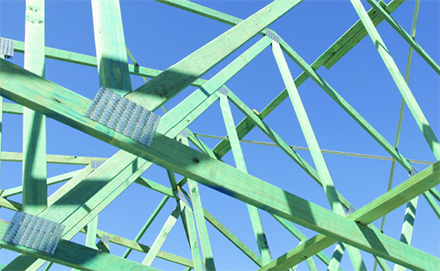Australia faces a major sovereign capability gap in the production of timber house frames by 2035, according to a landmark new report by Master Builders Australia and the Australian Forest Products Association titled Australia’s Timber Framing Cliff. Source: Timberbiz
The report further signals how crucial it is for the federal and state governments to deliver policies to urgently drive new production tree plantings.
It shows Australia is headed towards a major cliff in timber framing production, concluding we will be 250,000 house frames short by 2035 – the equivalent of the cities of Newcastle and Geelong combined.
CEO of Master Builders Australia Denita Wawn said supply of quality Australian timber for new homes and buildings was critical for the national construction sector.
“This analysis is a wake-up call for decision makers to act now to avoid a construction industry crisis in the next decade. It’s in Australia’s national interest to secure our local timber supply by ensuring our timber plantation stock can meet future housing demand,” she said.
“The housing construction industry is the engine room of the Australian economy, and it needs a consistent, reliable domestic timber supply. As the timber shortages of the past 18 months have shown, we cannot rely on imports to fill the gap when we have increased construction activity – we need to act now.”
The state-by-state analysis reveals just how many house frames short of demand Australia will be by 2035. Victoria will be a city the size of Geelong short, NSW will be Wagga Wagga and Tamworth short, Queensland will be a city the size of Cairns short, South Australia a Mount Gambier short, WA a Bunbury short, Tasmania a city the size of Kingston short, the NT a town the size of Tennant Creek short and the ACT a suburb the size of Kambah.
“This report shows that state and federal governments need to seriously tackle the policies which will drive forward new plantings of the right types of trees at the right scale and in the right places,” AFPA CEO Ross Hampton said.
“Australian governments need to work together on a national plan that delivers an immediate increase in our plantation estate to ensure Australia can meet its future housing construction needs,” he said.
“Future generations of Aussie homeowners are counting on it.”
The report can be downloaded here:Australias-timber-framing-cliff







